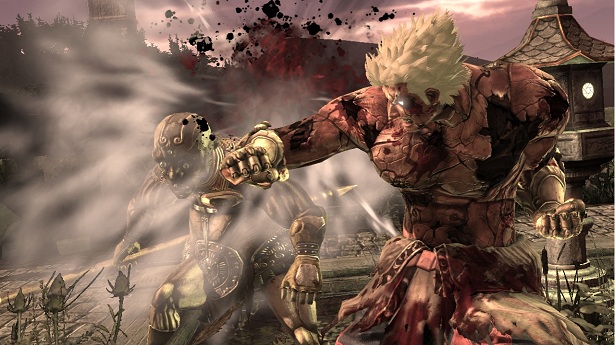

It is a cruel world, and the demise of the Control Panel leaves me wondering “is nothing sacred to Microsoft?” So while users new to the Windows experience may rejoice in the new Settings panel, what of us older generations brought up with the Control Panel?
Will we find accord for the new Settings app, or be left yearning for the familiar Control Panel interface? Let’s look at what’s new, what’s changed, and what’s yet to happen.
Windows 10 has brought about a massive amount of change to our computers. Streamlining access and boosting productivity ran central to the design philosophy of the operating system, and it can be seen in abundance with new Windows shortcuts, automated smart-files, and of course the ongoing restructuring of core Windows features.

The Control Panel is no different; reformation and issue resolution are found in every nook and cranny of Windows 10.
A fair few things, actually. First off, a new shortcut: Windows + I. This brings up the Settings app. Otherwise, head to the Start Menu. It should be nestled between “File Explorer” and “Power.” Either way, you’ll notice a stark difference to the traditional Control Panel. The Settings menu is now a sleeker set of nine-menus, along with the vastly improved Find a Setting search feature in the top-right corner:

In fact, having scrutinized both the Settings app and the original Control Panel, it would seem that the difference is in the functionality. Meaning that the new Settings menu isn’t the finished article yet; that the Control Panel is set to leave us, as soon as Microsoft decides how long to offer the legacy feature for.
Notably, a number of Windows 10 features are well integrated into the Settings app:

Of equal note are the trickle of disappearances from the Control Panel itself. Access the Control Panel by right-clicking the Start Menu and selecting Control Panel from the context menu. There are no longer Control Panel entries for the Action Center, Location Settings, or Windows Update, all having migrated to the Settings app. However, many users have noted that following the transfer the options available to users have decreased, and indeed in the case of Windows Update changed altogether.
The Control Panel will slowly but surely become a ghost panel, devoid of any meaningful system settings. Or, and a more likely assumption would be of an accessible Control Panel for any legacy features, such as drivers.
The original Control Panel appeared way back in Windows 2.0. That’s 1987. I hadn’t even arrived in the world, yet! Its longevity as a central Windows tool has come under fire in our touchscreen-centric age: it simply doesn’t do the jobs it needs to when there are sausage-fingers involved.

The new Settings panel is the opposite of this. Large buttons, single toggles for most important features, a questionable reduction in potential options for new users, and a somewhat easier-to-learn experience for those with new touch-enabled hardware. While I haven’t used the Settings app on a touchscreen device, the UI design screams touch-functionality, delivering users an intuitive experience with clear options, less clutter, more relevant information in a universal package.
It would seem the Control Panel is destined to become a mere legacy tool. Or, it will fall into the same bracket as the Run command, and the Command Prompt itself: only used by those in the know, or those users that could be bracketed “advanced.”
If and when the Control Panel is stripped for further parts, you could always resort to God Mode and create a folder to give you access to all of the administration functions you could desire.
Well, yes. Really slowly. Gabe Aul, Windows and Devices Group Vice President alluded to this in a recent Tweet:
@billybobjoe2211 @brandonleblanc Having two separate implementations means more code complexity and disk/mem usage. Getting to one is leaner
— Gabriel Aul (@GabeAul) October 4, 2015
Windows 10 is designed to please literally everyone, and as such features like the Control Panel were always going to receive some Windows 10 treatment. Not that this is necessarily a bad thing. Once the entire spectrum of Control Panel features and settings makes the transition to the Settings app, I think it could be an excellent feature that should encourage more regular users to interact with their system settings. Now each setting comes with a superior description (vs. Windows 7, 8, 8.1 etc.), an easier-to-navigate layout, and the all-important search tool, Microsoft may well be onto a winner.
Remember when categories were introduced in Windows XP? There was a whole pile of fuss around those changes, too. But eventually they became integrated into the Windows experience, and many people embraced those. Given time, I’m sure the many will embrace the Settings app, too.
Should the Settings app take over, or should the Control Panel remain a legacy feature for those who want it?




 Titanfall: How to Level Up Fast & Easy
Titanfall: How to Level Up Fast & Easy Destiny Guide: How To Get Into Strike Solo On PlayStation 4
Destiny Guide: How To Get Into Strike Solo On PlayStation 4 Warframe Wiki: Everything you need to know about the game .
Warframe Wiki: Everything you need to know about the game . Saunavihta Vortex Walkthrough
Saunavihta Vortex Walkthrough Are Video Game Developers Taking Online Security Seriously?
Are Video Game Developers Taking Online Security Seriously?